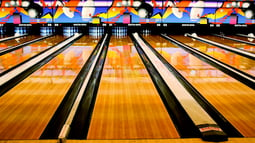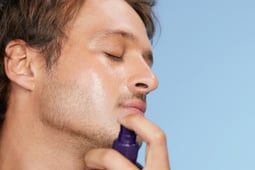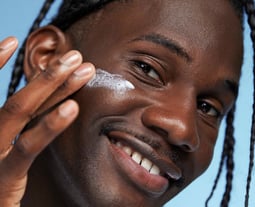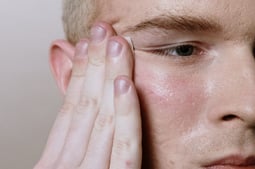

Combination skin, oily skin: a similar problem we can help you solve.
It is a common misconception that oily skin is a problem restricted to teenagers only. Unfortunately even the classiest of men aren’t immune to this predicament. Its easily recognisable shiny aspect is a fertile ground for blackheads, spots and other impurities. Oily skins require more maintenance and specific products.
Combination skin is a strange mix of oily skin on the T-zone (forehead, nose and chin), and dry skin on the cheeks and temples.
What causes excess sebum?
Although there are some urban legends claiming there is a correlation between sebum production and high fat foods such as charcuterie, there is absolutely no proven relation between dry Italian sausages and oily skin. There are other reasons however, particularly external ones.
Pollution is extremely aggressive on the skin. It increases sebum oxidation and induces spots and breakouts.
As is the case for all skin problems, stress is an aggravating factor. Oily skin only gets worse in stressful situations. It’s worth noting that on top of the nice relaxing break holidays provide, sun has a very positive, albeit temporary, effect on oily skin. Careful not to go over the top with beach volley and similar beach activities, excessive sweating only makes things worse.
How to treat oily skin
It would be an understatement to say oily skins have a terrible reputation. However, they are much better protected against environmental pollution, better moisturised, and age better due to the high levels of sebum they generate. Don’t expect your oily skin to mean you’ll age as gracefully as George Clooney, though. It is crucial to regulate sebum production. The following easy steps will help.
First step: Clean your skin to regulate excess sebum production
Pay particular attention to the cleaning of your skin. Use a face cleanser that isn’t too aggressive, as stripping down your skin will induce production of more sebum, in other words the opposite of what you’re trying to achieve. Excessive sebum production can lead to clogged pores, which in turn cause spots. Oily skin is like cashmere, treat it with particular care.
Second step: Purify your skin with a toner
To reduce excess oil, apply a toner after cleansing. Our Toner will purify and rebalance your skin to make it less oily instantly and in the long term.
Third step: Moisturise to protect your skin and improve your skin tone
Moisturising is also essential, and it would be a mistake to think oily skin doesn’t require it. Left to its own devices, oily skin will end up drying. Make sure to moisturise it with special oily skin cream, such as those from our range.
Fourth step: Exfoliate to unclog and remove dead skin cells
Once to twice a week, use your usual cleanser with our Konjac and Binchotan sponge. Because oily skin tends to clog up faster, an exfoliating sponge will help remove dead skin cells and other residue that can fill up pores. Freeing your pores is also the best way to reduce the risk of spots.
Fifth step: Use a mask to unclog pores
We also recommend applying a mask once to twice a month. The mask’s clay is particularly efficient to unclog pores. For the 10 minutes it requires to work its magic, sit back in your silk robe, Harvard Business Review in hand, and enjoy a nice relaxing moment which will also do your skin some good. Unclogged pores are less likely to induce spots and blackheads.
When taken care of properly, there’s no reason your skin should bring up memories of your complicated teenage years. This does not mean you have to give up your juvenile sense of humour or your love for Californian punk-rock band NOFX.













